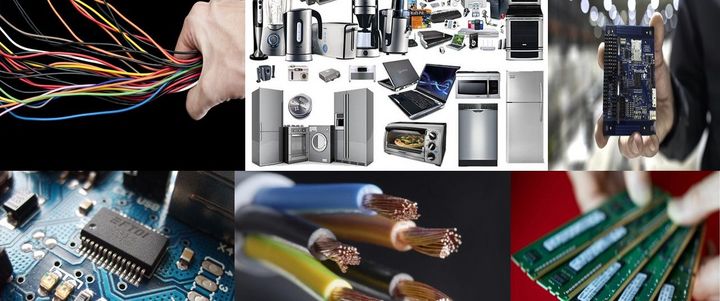Testing
Restriction of Hazardous substances in electrical and electronic equipment was a directive released by the European commission to tackle to problem of environmental pollution due to electronics. The restricted substances are hazardous to the environment and pollute landfills and are dangerous in terms of occupational exposure during manufacturing and recycling.
The Initial RoHS Directive 2002/95/EC, was published in the European Union (EU) in 2002 which was also known as RoHS1 and restricted the use of six hazardous {lead, mercury, cadmium, hexavalent chromium, polybrominated biphenyls (PBB’s) and polybrominated diphenyl ethers (PBDE’s)} substances found in electrical and electronic products.
The Directive 2011/65/EU which was known as RoHS 2, was an advancement of the directive 2002/95/EC which became law on 21 July 2011 and came in to effect on 2 January 2013 but the number of substances listed in the initial Directive 2002/95/EC did not change. RoHS 2 included a CE marking requirement for EEE and additional record keeping requirements became mandatory to demonstrate compliance.
In 2015, the EU Commission published Directive 2015/863 (known as RoHS3) to amend Annex II of RoHS 2. Coming into effect on 22 July 2019, this amendment added four phthalates to the list of restricted substances.
RoHS 1 applied to low voltage electrical and electronic devices, i.e. less than 1000V A.C. or less than 1500V D.C., listed in appendix 1A to directive 2002/96/EC on WEEE. The scope of the directive covered 8 product categories (1 to7 &10) mentioned in WEEE directive 2002/96/EC. RoHS2 applied to low voltage electrical and electronic devices, i.e. less than 1000V A.C. or less than 1500V D.C., listed in Annex I to directive DIRECTIVE 2011/65/EU.
Materials for which RoHS is applicable:
- Large household appliances.
- Small household appliances.
- IT and telecommunications equipment.
- Consumer equipment.
- Lighting equipment.
- Electrical and electronic tools.
- Toys, leisure and sports equipment.
- Medical devices.
- Monitoring and control instruments including industrial monitoring and control instruments.
- Automatic dispensers.
- Other EEE not covered by any of the categories above
The total number of restricted Substances under EU RoHS is now ten & specifies maximum concentration levels for any homogeneous material as below:
Original 6 substances (2011/65/EU):
- Lead(Pb) : 0.1%
- Mercury: 0.1%
- Cadmium(Cd): 0.01%
- Hexavalent chromium (Cr6+): 0.1%
- Polybrominated Biphenyls (PBB): 0.1 %
- Polybrominated Diphenyl Ethers (PBDE): 0.1 %
Additional 4 substances ((EU) 2015/863):
- Bis(2-Ethylhexyl) phthalate (DEHP): max 0.1%
- Benzyl butyl phthalate (BBP): max 0.1%
- Dibutyl phthalate (DBP): max 0.1%
- Diisobutyl phthalate (DIBP): max 0.1%
We at TUV India, can offer you with RoHS3 compliance testing & CE marking services.
We have complete testing facility for all 10 Substances mentioned under RoHS3 in our NABL accredited laboratories with complete scope coverage for same. TUV India uses best in class latest technologies using internationally approved methods to provide you with quick and reliable results.
RoHS impacts the entire electronics industry now. Any business that places electronic products, sub-assemblies or components onto the EU market must comply with these RoHS3 requirements except medical devices, including in vitro medical devices, and monitoring and control instruments, including industrial monitoring and control instruments.
New products manufactured in the union and all products & components imported from third countries, must meet the provisions of the applicable union harmonization legislation. Electronics manufacturers will be required to keep records to prove compliance and keep the EU declaration of conformity for a minimum of 10 years after the EEE have been placed in the market.
We are looking forward to your enquiry
TUV India House, Survey No – 42, 3/1 & 3/2, Sus, Pune- 411021, Maharashtra
Agricultural, Food, Chemicals, Material Testing, Home & Personal Care Testing
Tel.: 020 – 67900000 / 67900001
foodlabindia@tuv-nord.com
